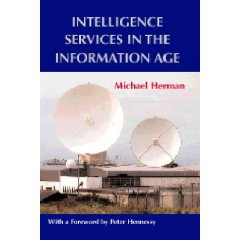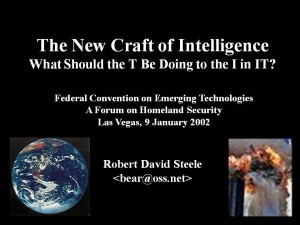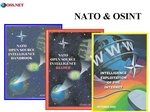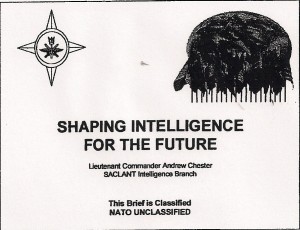I hope this is the last of the theoretical volumes. While it has some operationally-oriented contributions, one of the best being by Phil Williams on Transnational Criminal Networks, it is too theoretical overall, and much too US-centric. There are French, Nordic, and Singaporean, and Australian authorities, to mention just a few, that the editors must now make an effort to bring into a larger dialog. At the same time, it is now vital that we get on with much deeper study and discussion of the actual networks and specific practices–we must do much more in documenting the “order of battle” for netwar. One article, for example, lists a sample of Arabic web sites but goes no further–I would have liked to see some discussion of the 396 terrorist, insurgent, and opposition web sites, including the “Muslim Hackers” who asked for a clerical ruling on whether the Koran encouraged hacking as a means of war (it does, according to the same people that support bin Laden's views), and I would like to see much more integration with the investigative efforts of both law enforcement authorities and private sector security and fraud authorities. I am especially disappointed that all of these authorities appear to be largely oblivious to or at least not making substantive reference to the ten-year-long track record compiled by Winn Schartau and his InfoWarCon speakers and web site, an event that is arguably the only serious international venue for addressing these issues in a serious manner, with a commensurately valuable web site.
There is one other major gap in this book's approach to networks and netwars. With the exception of Paul de Armond's article on netwar against the World Trade Organization, there are no references to intelligence failures and intelligence requirements vis a vis this threat domain. The editors and authors need to establish intelligence concepts and doctrine for this threat.
This book represents the very best that DoD money can fund in isolation, and therein lies the problem. What few taxpayer funds are spent by DoD in addressing such important matters and not being spent wisely because there is no serious commitment to creating a data warehouse of all studies related to networks and netwar; there is no commitment to accessing and understanding the considerable lessons learned outside the somewhat nepotistic DoD network of standard experts; and there seems to be no commitment to creating a center of excellence that can nurture *public* understanding and new *public* standards for protecting both our critical infrastructure and the vital data that circulates on that infrastructure.
The editors and the authors are of the very highest caliber. They are also operating in a vacuum. I for one would like to see them get serious funding, to include the establishment of a public international center of excellence on netwar, with branch offices in London and Singapore.
We are losing the Third World War, between governments and gangs, in part because the military-industrial-congressional complex continues to define security in terms of very expensive mobility and weapons systems–communications, computing, and intelligence are an afterthought, and the authors are quite correct in the aggregate when they suggest that we are our own worst enemy in failing to redirect substantial funds toward cyber-war and cyber-peace. The editors and authors could be very helpful if they address in their next volume, both an intelligence order of battle against which capabilities might be created; and specific proposals for establishing international, national, and state & local capabilities. What should they be, what will it cost, who should manage them? “It ain't real until its the budget.” The authors are gracious to a fault, but it is clear from their work in the aggregate that they share a concern with our lack of preparedness for a 9-11 level of effort against our financial, transportation, power, and communications networks. They merit the greatest of respect and a full hearing from the public.











